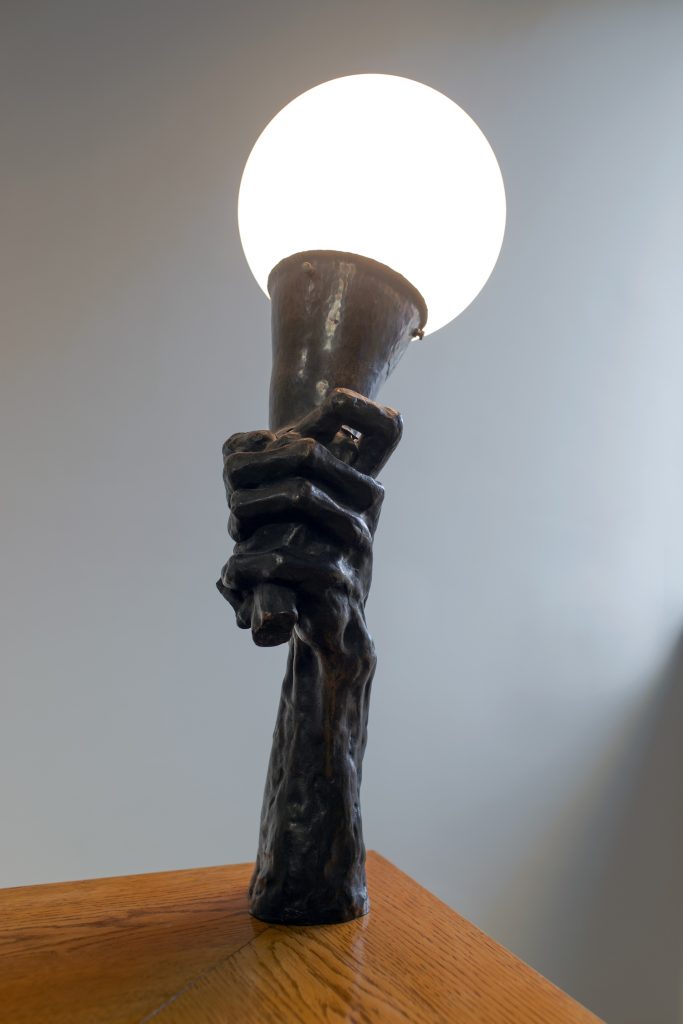Hand holding a torch in old manor’s staircase
MAY 2017
A peculiar looking light fixture made of metal and glass greets the museum visitor on the first-floor railing of old Joenniemi Manor’s staircase. The light bulb with a white glass dome covering it has been embedded in a metal cone. A bony hand holds the burning torch.
What is the story behind this curious item? A more precise examination reveals that the bronze hand’s design is so skilful that a true sculptor must have created it. The artwork has no signature, however. Who has made the sculpture and why on earth has it ended up as a lamp stand?
Gösta Serlachius’ letter to the limited company of Oy Taito Ab from October 1935 throws more light on these questions. Serlachius had sent by rail to Taito Ltd a parcel containing a hand made by sculptor Wrede. The sender expressed a wish that they would remake the hand into a lamp stand fitting to Joenniemi first floor landing.
Serlachius Museums’ archives do not contain any information as to how and when Serlachius acquired the sculpture that the sculptor baron Carl Henrik Wrede (1890–1924) created. In the art historical context the artist has attracted only little attention because he died of meningitis in the middle of his career at the age of 33. Wrede had studied sculpture in Helsinki and Paris. Nowadays the collections of the Finnish National Gallery, the National museum of Finland and Kouvola Art museum as well as at Vatican in Rome comprise his artworks.
The letter found in the archives makes it also clear that Taito Ltd made several proposals to Serlachius as to what the lighting part of the lamp should look like and how the hand should be attached to the light fixture. One sketch suggested that the hand should be attached directly to the wall in the 90-degree angle so that the hand would hold a flat, dish-like glass dome. So situated, the lamplight would have been reflected to the staircase from the ceiling.
It remains unknown whether Carl Henrik Wrede and Gösta Serlachius knew each other. At least artist Verner Thomé belonged to the circle of acquaintances of the both of them. They also had their membership in the Finnish White Guard in common. They could also have been in contact through the brother of Carl Henrik Wrede, Ernst Fabian Wrede, the CEO of Finnish Sawmill Owners’ Association in 1922–1940, to whom Serlachius was acquainted through his work.
It was in 1972 that the light fixture came into the ownership of the in 1933 established Gösta Serlachius Fine Arts Foundation when foundation acquired Joenniemi manor of the descendants of Gösta Serlachius’ son Bror. Therefore, the light fixture has virtually been a part of the original interior decorations of Joenniemi manor’s main building. Jarl Eklund designed the Manor which was completed in 1935.
Marjo-Riitta Simpanen
Curator, Art historian


